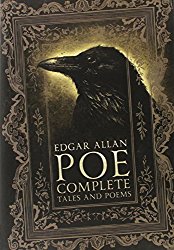Edgar Allan Poe
"The Gold Bug"
by Drew R. Thomas
| "Few persons can be made to believe that it is not quite an easy thing to invent a method of secret writing which shall baffle investigation. Yet it may be roundly asserted that human ingenuity cannot concoct a cipher which human ingenuity cannot resolve..." |
| Edgar Allan Poe - "A few words on secret writing" (1841) |
Before writing the three tales about his detective, "the Chevalier C. Auguste Dupin, Edgar Allan Poe had written two stories which numerous chroniclers of the history of the detective story, including Dorothy L. Sayers, have seized upon as adding to the development of the detective story.
Howard Haycraft says, "Edgar Allan Poe wrote only three detective stories: "The Murders in the Rue Morgue," "The Mystery of Marie Roget," and "The Purloined Letter."
But, he tells us, "A fourth tale of Poe's, 'The Gold Bug,' is often carelessly miscalled a detective story. It is a fine story, a masterpiece of mystery and even of analysis -- but it is not a detective story for the simple reason that every shred of the evidence on which Legrand's brilliant deductions are based is withheld from the reader until after the solution is disclosed! The same objection excludes still another Poe tale, 'Thou Art the Man,' which, in point of fact, comes much closer structurally to qualifying than 'The Gold Bug'" (Murder for Pleasure, pages 9, 10).
Without going into great detail because I don't want to spoil the story for you, I just want to point out that "The Gold Bug" (Tales of Edgar Allan Poe) introduced the concept of deciphering a code. Poe became fascinated with the subject. In 1841, two years before "The Gold Bug" was published, he wrote an essay on Secret Writing. He also published some ciphers submitted by "W. B. Tyler" (but which some scholars believe he created himself) and challenged readers to solve them.
Poe's character William Legrand solves an old cryptogram (or cryptograph, as Poe coined it) written on parchment or vellum. A type of invisible ink is employed that is made visible by bringing the parchment into close proximity with heat.
Legrand shows the parchment to a friend, who tells us:
| The following characters were rudely traced, in a red tint...: |
|
"53‡‡†305))6*;4826)4‡)4‡;806*;48‡8¶60))85;1-(;:*8-83(88)5*‡ ;46(;88*96*?;8)*‡(;485);5*†2:*‡(;4956*2(5*- 4)8¶8*;40692 85);)6†8)4;1(‡9;48081;8:8‡1;48†85;4)485†528806*81(‡9;48; (88;4(‡?34;48)4‡;161;:188;‡?;" |
Legrand explains how he determined that the language the code represents is English (as opposed to Spanish or French, for example), and how he worked out symbol by symbol what each represents. He says:
| "You observe there are no divisions between the words. Had there been divisions, the task would have been comparatively easy. In such case I should have commenced with a collation and analysis of the shorter words, and, had a word of a single letter occurred, as is most likely, (a or I, for example,) I should have considered the solution as assured. But, there being no division, my first step was to ascertain the predominant letters, as well as the least frequent. Counting all, I constructed a table, thus: |
| Of the character | 8 there are 33. |
| ; " 26.
4 " 19. ‡ ) " 16. * " 13. 5 " 12. 6 " 11. † 1 " 8. 0 " 6. 9 2 " 5. : 3 " 4. ? " 3. ¶ " 2. -. " 1. " |
Legrand's full analysis, explication, and deciphering is worth reading, and the act of deciphering secret codes has found its way into the literature of the detective, crime, and murder mystery genre. It has influenced writers including Arthur Conan Doyle (who incorporated it into "The Dancing Men" and The Valley of Fear, for example), R. Austin Freeman ("The Moabite Cipher"), Dorothy L. Sayers (Have His Carcase) and many, many more.
The solution of Poe's alphabet-substitution code hinges on the fact that certain letters occur more commonly than other letters, so if you tally them up, as Legrand does, you can make an educated guess at some of them, and then, building on that, fill in others as you work through it.
|
Legrand tells his friend:
It is interesting to note that the English language has changed since Poe wrote his story so that the sequence of most commonly used letters has changed, as well (twice, in fact!). Today the sequence of most commonly used letters is: e t a o i n s h r d l u c m f g y p w b v k x j |
Click Image to Click the image below to |
Amazon and the Amazon logo are trademarks of Amazon.com, Inc. or its affiliates.
(This is a link through which I make a small commission if you buy. See here for more details.)


